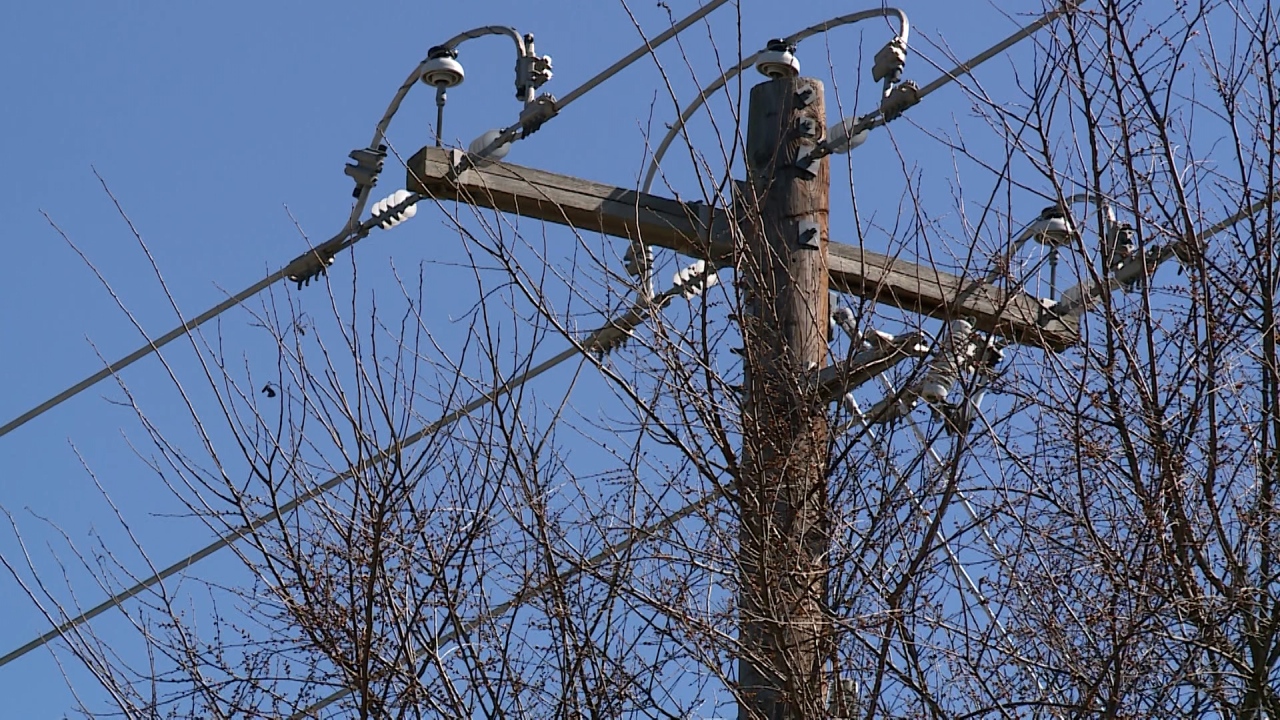AUSTIN (KXAN) — As triple-digit heat continues this month, ERCOT has already broken the all-time record for peak summer demand twice.
Still, the state’s power grid operator remains confident it will have enough power to meet demand this summer.
That doesn’t guarantee your lights will stay on, though, it just means the state doesn’t expect rolling blackouts due to larger-scale problems with the grid.
Several viewers have reached out to KXAN reporting local power outages. On Monday, around 4,500 Austin Energy customers lost power.
“We’re sitting down to watch TV and power kind of hiccup for a while, and then it just went off,” Austin resident Charles Kamen told KXAN, who lives right near the Zilker Neighborhood.
He said he immediately thought back to the blackouts during the February freeze in 2021.
“I think we’re all still a little concerned you know, we don’t have 100% confidence yet in the in the grid,” Kamen explained.
Austin Energy spokesperson Matt Mitchell said this outage in particular was due to a car crashing into a pole on South Lamar Boulevard, which sparked a fire. Power was restored in less than of a half hour.
“When that happens, there’s a high potential for a fire, especially in the dry conditions that we’re having now,” Mitchell explained.
This is an example of a local outage, very different from the rolling blackouts we saw in February 2021.
“It’s possible that you can have the bulk grid working just fine, it’s keeping up with demand, but still have local outages because it gets hot and a local transformer will exceed its limits, or a tree will fall locally or snake touches the line,” Dr. Michael Webber with UT-Austin’s Energy Institute explained.
Rolling blackouts happen in emergency conditions when ERCOT expects more people will need power than it is able to supply. The forced blackouts are then meant to relieve the high demand on the grid in an effort to keep the entire grid from collapsing, which would be catastrophic and require an entire infrastructure overhaul that could take months.
Before we reach that level of emergency, where blackouts would begin, ERCOT would issue conservation alerts, asking Texans to reduce their individual strain on the grid.
Austin Energy said if customers experience an outage this summer, it is most likely an infrastructure problem like the one customers experienced Monday.
“When you’ve got tens of thousands of miles of power lines, there’s a lot of opportunity there for a tree or a tree limb to get into it to to cause some damage and for us to need to respond,” Mitchell said.
Earlier this year, ERCOT stated it is confident the grid will be able to meet demand this summer, which it projects will be 77,317 megawatts. That’s even higher than the current record, set Monday, but the state is expected to continue breaking those records as our population grows.
Part of the reason ERCOT says it will be able to meet demand this summer is due to operational changes. Since the winter storm, ERCOT has operated more conservatively.
“Which means essentially a lot more reserves ready to go, a lot more power plants ready to go. Rather than mothballed and not in commission, they are on task and ready to provide power on a moment’s notice. And we’re paying for that,” Webber explained.
“Historically, we’re pretty cheap. And we don’t want to pay for a liability. But after hundreds of people died, it was so expensive when the grid failed in February 2021. We decided essentially, well, I guess you’d rather pay for reliability,” Webber continued.
Tuesday, ERCOT heard from the Independent Market Monitor on just how much that has been costing the state.
“We’re seeing that those increased requirements, again, are still impacting market outcomes, we estimate about $210 to $385 million year to date for that increased procurement and the effect on the ancillary services prices,” the IMM said Tuesday.
Additionally, the monitor estimated operating the Reliability Unit Commitment so far this year has had an impact of about $460 million.
“The independent Market Monitor comes back and says well, we are paying and it’s gonna be like a billion or $2 billion this year. The challenge is we don’t know if it truly improving reliability. But paying a billion or $2 billion to avoid a $10 billion event might be worthwhile,” Webber said.
This will end up trickling down to customers.
“The reason why Texas consumers should care about these operational changes that cost $1 billion or $2 billion is because it will show up in our bills,” Webber said.
Long-term, energy experts like Webber said the state needs to consider other options that can both improve reliability, while keeping power affordable. That starts with improving energy efficiency of our buildings.
“We need a lot of demand response, which is the ability to turn off on essential loads, which might be a clothes dryer or pool pump or a water heater. We also need more storage, more batteries or other ways to do storage. And we also need more transmission lines that connect more sources of electricity,” Webber said.
“Between efficiency, demand response storage transmission, those give us a lot of tools, in addition to the operational changes have been made. But if you use all the tools in the toolbox ends up being cheaper and more reliable,” Webber said.
